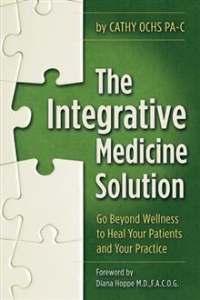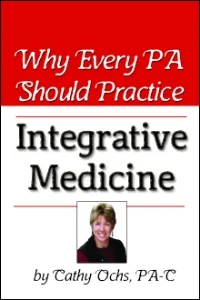Hormonal balance is the key to healthy living and longevity.
Hormone Replacement — Misunderstood & Crucial for Optimal Health
Why the master gland is essential for life
Somatopause—the Neglected Condition
All hormones are vital to life. Remember what we learned in school: hormones control and regulate the activity of our cells. Too much or too little means unhealthy control and regulation in the body. This is why cancer cells grow as well as disease and deterioration occur. Here’s just a small sample of what happens when pituitary function goes awry:
- Too little growth hormone (HGH) causes dwarfism
- Too much growth hormone results in acromegaly (Tony Robbins has this)
- Too little TSH causes hypothyroidism, too much causes hyperthyroidism
All hormones produced by the pituitary must be balanced. If not, the other hormonal systems it controls are affected — thyroid, adrenals, pancreas, ovaries, testes. As the Master Gland, optimal function of the pituitary is ESSENTIAL for life.
Did you know that growth hormone levels produced by the pituitary fall between the ages of 20 to 30? By age 60 most people are only making a fourth of the amount they made at 20. Some people decline faster and sooner. Head injuries are one way HGH production declines sooner.
We need HGH to grow up. We still need growth hormone once we are grown. Three big jobs of HGH are to:
- maintain the size of our organs (especially brain, heart and lungs)
- repair of tissues
- conversion of T4 to T3
HGH decline is occurring in patients over age 30 to 40. Look at a brain MRI report of a 50 year old patient. Usually part of the Impression will read: brain atrophy consistent with age. Take a deep breath — if you are over 30 and you cough, your lungs very likely are already shrinking. Who wants their brain and lungs to shrink?
HGH is the primary hormone that keeps us healthy and young. The field of anti-aging exploded when this fact was revealed in the early 1990’s. The decline in HGH production is called SOMATOPAUSE.
Do you routinely test your patients’ growth hormone levels? If not, you are missing an essential part of care for your patients.
Just like routinely checking insulin, estrogen, and testosterone — checking IGF-1 and BP3 levels is vitally important.
Integrative medicine has natural treatments for Somatopause. Ranging from specific dietary and exercise approaches to HGH injections at an anti-aging clinic. I have been using a unique and effective oral secretagogue spray which nourishes the pituitary to increase HGH levels. To learn more about Otropin spray visit http://thisisorenda.com.
Type 2 Hypothyroidism – The Silent Epidemic
How many times has this happened to you…
Your patient comes in with all the classic signs and symptoms of hypothyroidism; weight gain, lethargy, dry skin, thinning of the outer third of their eyebrows. But their thyroid panel is completely NORMAL!
You are perplexed and end up telling them it must be something else. You go down another path of testing and workups and still come up empty handed. You might even refer them to an endocrinologist!
Did you know the majority of your patients (and probably you too!) have Type 2 Hypothyroidism? Never heard of this? You aren’t alone.
We learned in school about hypothyroidism, which is referred to today as Type 1 Hypothyroidism. The thyroid gland is not producing enough thyroid hormone. Blood tests quickly confirm this with a high TSH, low T4 and T3.
Type 2 Hypothyroidism presents with the same symptoms but caused in a different way. The thyroid gland is producing plenty of thyroid hormone, the problem is the cells are resistant. Thyroid hormone is unable to act on the cells.
This is the similar to Type 2 Diabetes. Patients make plenty of insulin, in fact making too much. The problem is the cells are resistant to insulin.
Both Type 2 Diabetes and Type 2 Hypothyroidism develop from the same reason, toxic chemicals act as endocrine-mimetics blocking the receptor sites. Learn more about these chemicals here, The Detox Difference.
No Blood Tests for Type 2 Hypothyroidism
This is why we miss diagnosing Type 2 Hypothyoidism. We have become too reliant on blood tests. The best way to diagnose Type 2 Hypothyroidism is taking axillary temperatures for 10 minutes before your patient gets up in the morning. Subnormal am temperatures (below 97.8) along with signs and symptoms confirms the diagnosis of Type 2 Hypothyoidism.
Mark Starr, M.D., author of Hypothyroidism Type 2: The Epidemic, is getting this vital information out to the public and healthcare providers. Dr. Starr estimates 80% or more of all people have Type 2 Hypothyroidism. He states in his book:
“Never in the history of modern medicine has there been an epidemic of such proportion that has gone unrecognized. A well described and easily treated disease has invaded the vast majority of our homes, wrecking havoc in ways the medical profession could never imagine.”
Dr. Starr uncovered research and studies that had been ignored and buried for years. He states in his book, “Hormone problems, chiefly hypothyroidism, not only are responsible for many of our aches and pains, but are also responsible for the majority of chronic illnesses found in modern society.”
Levothyroxine (Synthroid): Most Popular Thyroid Drug and Least Effective
Does this look familiar to you…
A patient is started on levothyroxine (usually 50 mcg). They notice some improvements at first. A few months later, they are getting more tired and worse again. We increase the dose. This works for a while, then we increase again. Pretty soon, their dose is as high as we are comfortable prescribing. Since their lab tests are normal, we continue this same dose, even though they still have symptoms. The patient assumes they just have to live with feeling tired and overweight.
Here’s the problem: Levothyroxine is T4 only, the precursor to the active T3 hormone. We assume their body is able to convert the T4 to T3. At first, some patients are able to convert and will notice improvements. Then they seem to need a higher dosage. Over time, even at a high dose, they continue to have the same symptoms of weight gain and fatigue. Even their blood tests will look normal. All along they are not able to convert enough T3 to be useful.
Why can’t patients convert T4 to T3? This is a combination of:
- lack of nutrients needed for conversion, especially iodine along with magnesium, selenium and zinc
- chemical toxins interfering in the conversion process, detoxification is essential (more about detoxification here)
- lack of HGH that is needed for conversion (need to treat somatopause!)
Much of this new information about Type 2 Hypothyroidism, diagnosis and natural treatment was studied and pioneered by Broda Barnes, M.D., PhD. from 1950 to 1970’s. Many integrative health practitioners have him to thank for his unwavering research and commitment.
"Health begins and ends with the proper balance of the endocrine system"
Broda O. Barnes, M.D., Ph.D.
Dr. Barnes was a practical, forward thinking physician and physiologist who studied endocrine dysfunction, especially hypothyroidism. In the 1970s, he published several books and studies showing how hypothyroidism was underdiagnosed in the U.S. and was responsible for a wide range of health problems including heart disease. Since his death, the Barnes Foundation has continued his research and information. To learn more go to: www.brodabarnes.org.
Integrative medicine practitioners approach thyroid diagnosis and treatment holistically. They use natural thyroid hormones that have both T4 and T3. I urge you to learn more and re-examine how you treat patients with symptoms of hypothyroidism and normal blood tests.
Estrogen, Progesterone, Testosterone — Misunderstood & Essential
Before 2002, routine estrogen replacement was standard of care for menopausal women. The majority of women who were entering menopause assumed they would start on HRT (usually premarin) to help ease their symptoms. We also gave HRT to help reduce heart disease risk and avoid osteoporosis.
This all changed in 2002 when the NIH Women’s Health Initiative halted prematurely the hormone replacement arm of the study. They found women taking PremPro (synthetic estrogen and progesterone) had increased risk for breast cancer, heart attacks, strokes and blood clots… the very reasons we had been told we should be giving Prempro to women!
Women were confused, scared, and angry (patients and healthcare providers alike). At that time, nearly 90% of menopausal women (who could benefit) were taking estrogen therapy. After the news broke about the study, the majority of these six million women taking Prempro stopped taking their prescription and turned to herbal alternatives or suffered without taking anything.
Since then, less than 10% of women who could benefit from HRT are getting estrogen therapy. Of these women, (out of fear) many choose to take the smallest subtherapeutic amount of hormone needed to alleviate symptoms. The standard of care recommendation if women do take HRT is not to exceed more than 5 years. We now know this has been a bad idea.
A study published in the American Journal of Publish Health August 2013 looked at the death rate in women who have avoided estrogen use since 2002.
This study shows WOMEN WHO AVOID ESTROGEN HAVE AN INCREASED RISK OF DEATH!
The Conclusion of the study states:
- Estrogen Therapy (ET) in younger postmenopausal women is associated with a decisive reduction in all-cause mortality
- BUT estrogen use in this population is low and continuing to fall
- Our data indicate an associated annual mortality toll in the THOUSANDS of women aged 50 to 59 years.
- Informed discussion between these women and their health care providers about the effects of ET is a matter of CONSIDERABLE URGENCY.
Dr. Philip Sarrat, co-author of the study, is urgently calling upon us to start encouraging women to re-consider estrogen therapy in order to SAVE LIVES.
See Dr. Sarrat's interview on YouTube here: The Mortality Toll of Estrogen Avoidance
The bottom line; women need estrogen and progesterone to be healthy.
The question is, what is the healthiest way to replenish these missing hormones? There are four choices…
- Do nothing (the 2013 study shows us this is a bad idea)
- Replace with synthetic hormones such as premarin and provera
- Replace with static (same daily dose) BIOIDENTICAL HORMONES
- RYTHYMIC bioidentical hormones (dose varies throughout the month mimicking the normal cycles)
Integrative medicine providers prefer to use bioidentical hormones since they are most similar to the body’s hormone. This approach applies to all hormones, especially to estrogen, progesterone, and testosterone. More recently, the fourth choice is new to many providers and quickly gaining attention. This rhythmic approach was developed by a medical researcher and called the Wiley Protocol.
Women and men benefit from the Wiley Protocol. Oprah Winfrey held several shows discussing the benefits of this new approach. Below, one Maryland physician, Fred Bloem M.D., shares his support of the Wiley Protocol in an interview for the Wiley Protocol website:
In my medical practice I first started with statically dosed bioidentical hormone replacement therapy and now I use rhythmically dosed bioidentical hormone replacement therapy. I have found the latter to be vastly superior.
As I sought to learn all about BHRT I read many books and attended seminars by Dr. Thierry Hertoghe, Dr. Jonathan Wright, Dr. Eldred Taylor, and T.S. Wiley. Ironically, the one that I found to be most helpful was not taught by a health professional: T.S. Wiley.
So like Suzanne Somers I endorse the Wiley Protocol and have seen outstanding results in my patients. Women feel like they are able to get their lives back, just like the women on Oprah today.
These are the things I like about the Wiley Protocol:
The hormones are identical to the ones that the human body makes.
Because the hormones are bioidentical they are able to form a perfect fit with the body’s hormone receptors, which results in physiological responses when dosed properly.
Dosing of the hormones is rhythmic and follows the pattern that we see in healthy young women with estradiol peaking on Day 12 and progesterone peaking on Day 21.
Among other things, the peak of estradiol on Day 12 causes activation of the progesterone and testosterone receptors, allowing these hormones to work better.
We are able to verify that women use the optimal amount of estradiol and progesterone by checking the levels on Day 12 and Day 21 of the cycle.
For postmenopausal women we synchronize the dosing schedule with the cycle of the moon.
Symptom relief is excellent. It simply works and patients are very happy with it.
Absence of side effects when dosed properly.
All the Wiley Registered Pharmacies use the same methods and raw materials to compound the Wiley Protocol hormones. This is very important! Standardization means that you can be sure that the Wiley Protocol hormones are exactly the same whether you get them from Knowles Apothecary in Kensington, Maryland, or any other Wiley Registered Pharmacy in North America.
The route of delivery is transdermal which is convenient and optimal compared to hormone injections, capsules, troches, and pellets. Transdermal application of hormones allows for rhythmic dosing, and absorption into the fat base creates a depot that fosters steady state serum levels of hormone. Oral estradiol produces undesirable changes in C-reactive protein and metabolites from the first-pass effect through the liver.
Developer of the Wiley Protocol, T.S. Wiley shares the basics in the below You Tube clip:
Integrative medicine providers understand the need to restore all hormone deficiencies. In doing so patients can live optimally and avoid the degeneration that accompanies hormonal decline. We owe it to our patients and ourselves to learn more. Hormones are ESSENTIAL to life!
More…
U.S. Healthcare
7 Integrative Principles
Big Pharma vs. Integrative Medicine
Underlying Cause
Detoxification
Nitric Oxide Miracle
Gut Health & Microbiome
Roadblocks to Optimal Health
IMPAA Practice
Beyond Wellness
PA Owned Medical Practice
The Integrative Medicine Solution, by Cathy Ochs, PA-C, founder of IMPAA.
AVAILABLE at Amazon.com.
Defines what an integrative medicine PA practice does. A must read for every physician assistant and health care professional committed to exceptional patient care. More info here.
FREE RESOURCES
Why Every PA Should Practice Integrative Medicine. The facts about integrative medicine, owning your own practice and more. Provocative, informative and often controversial. More info here.
How California PAs Can Own a Medical Corporation. Blueprint to operate a physician assistant owned medical corporation. Complete instructions A to Z. More info here.




